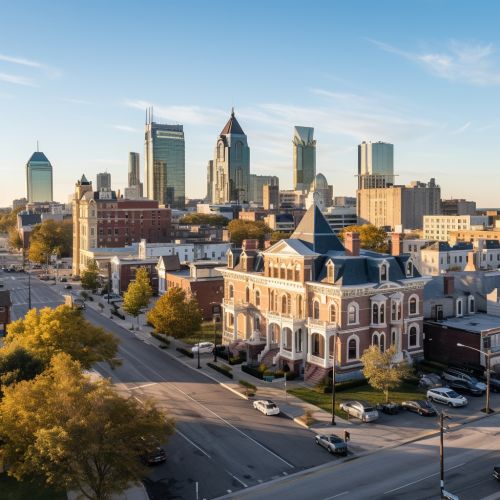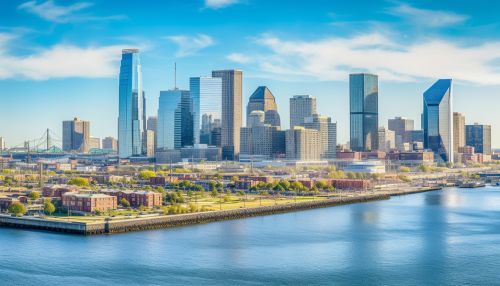Jersey City, New Jersey
Geography
Jersey City is located in the northeastern part of New Jersey, within the heart of the New York metropolitan area. The city is bordered by the Hudson River to the east, which separates it from Manhattan, New York City. To the south and west, it is bordered by Newark Bay and the Hackensack River. The city's topography is characterized by a diverse landscape, including the New Jersey Palisades, a line of steep cliffs along the west side of the Hudson River.


History
Jersey City has a rich history, beginning with its original inhabitants, the Lenape Native Americans. The area was later colonized by the Dutch in the 17th century and became a significant trading post. In the 19th century, the city experienced rapid industrialization and growth, becoming a major railroad terminus and manufacturing center. The city's history is marked by waves of immigration, contributing to its diverse cultural landscape.
Demographics
As of the 2010 Census, Jersey City had a population of 247,597, making it the second-most populous city in New Jersey. The city is known for its ethnic diversity, with a large number of residents of Hispanic, African American, and Asian descent. The city also has a significant number of residents with Italian, Irish, and Polish ancestry, reflecting the city's history as a destination for immigrants.
Economy
Jersey City has a diverse economy, with a strong presence in sectors such as finance, healthcare, and education. The city is home to many major corporations and has become a significant center for finance and insurance, with many companies relocating from Manhattan. The city's waterfront, known as "Wall Street West", is home to many financial institutions, including Goldman Sachs and JP Morgan Chase. The city also has a growing technology sector, with a number of tech startups and innovation hubs located in the city.
Education
Jersey City has a robust education system, with a variety of public, private, and charter schools. The city is served by the Jersey City Public Schools district, which operates a number of elementary, middle, and high schools. Jersey City is also home to several institutions of higher learning, including New Jersey City University and Saint Peter's University. The city's education system is known for its diversity and commitment to providing quality education for all students.
Culture
Jersey City boasts a vibrant cultural scene, with a wealth of museums, galleries, and performance venues. The city is home to the Jersey City Museum, which showcases the city's history and culture, and the Mana Contemporary, a large arts complex featuring contemporary art. The city also hosts a number of cultural festivals and events throughout the year, celebrating the city's diverse heritage and vibrant arts scene.
Transportation
Jersey City has a comprehensive transportation network, with extensive road, rail, and ferry connections. The city is served by the PATH (Port Authority Trans-Hudson) train system, which provides rapid transit to Manhattan, and the New Jersey Transit system, which offers bus and rail services throughout the state. The city also has a number of bike lanes and pedestrian-friendly streets, reflecting its commitment to sustainable transportation.
